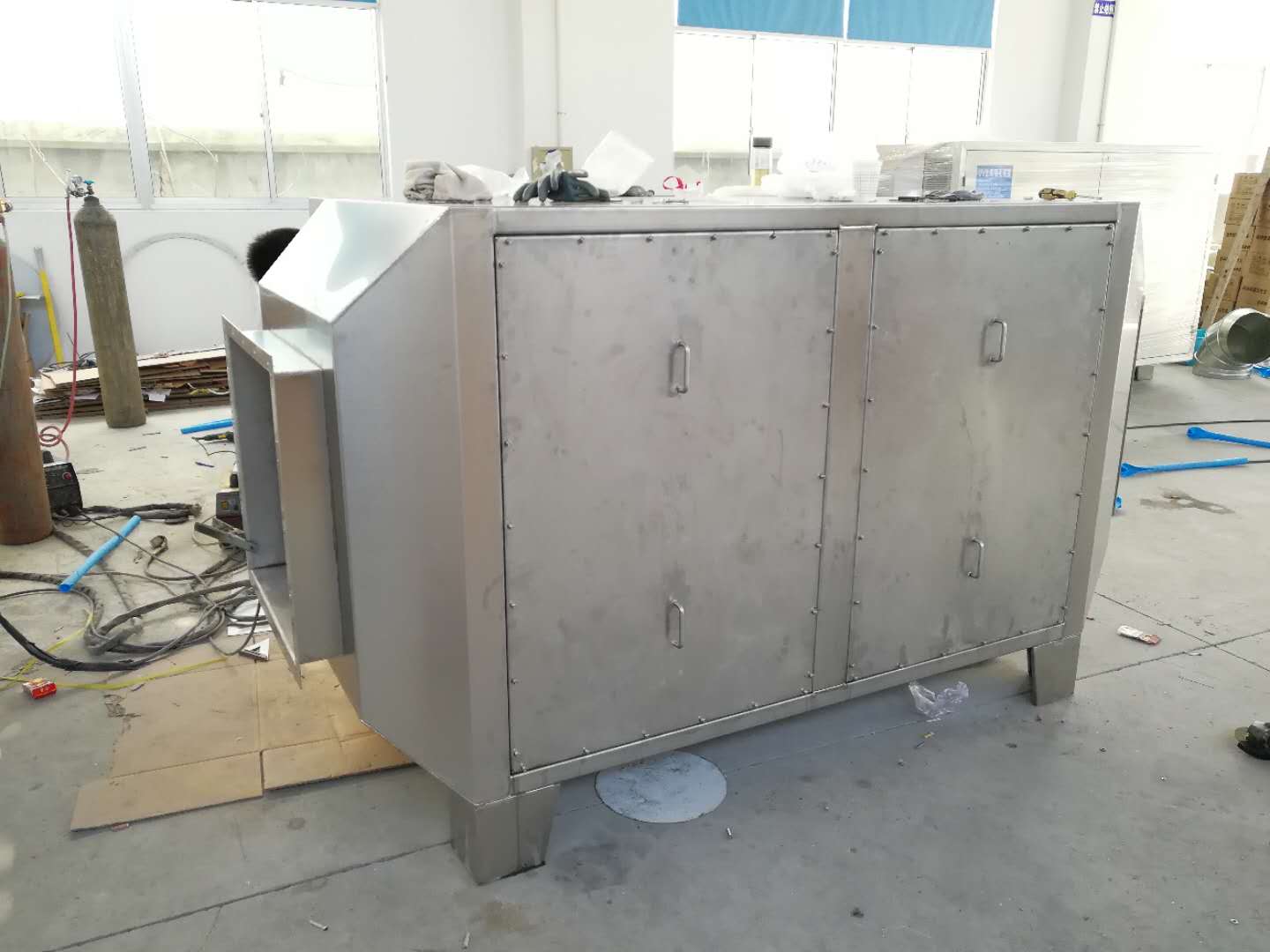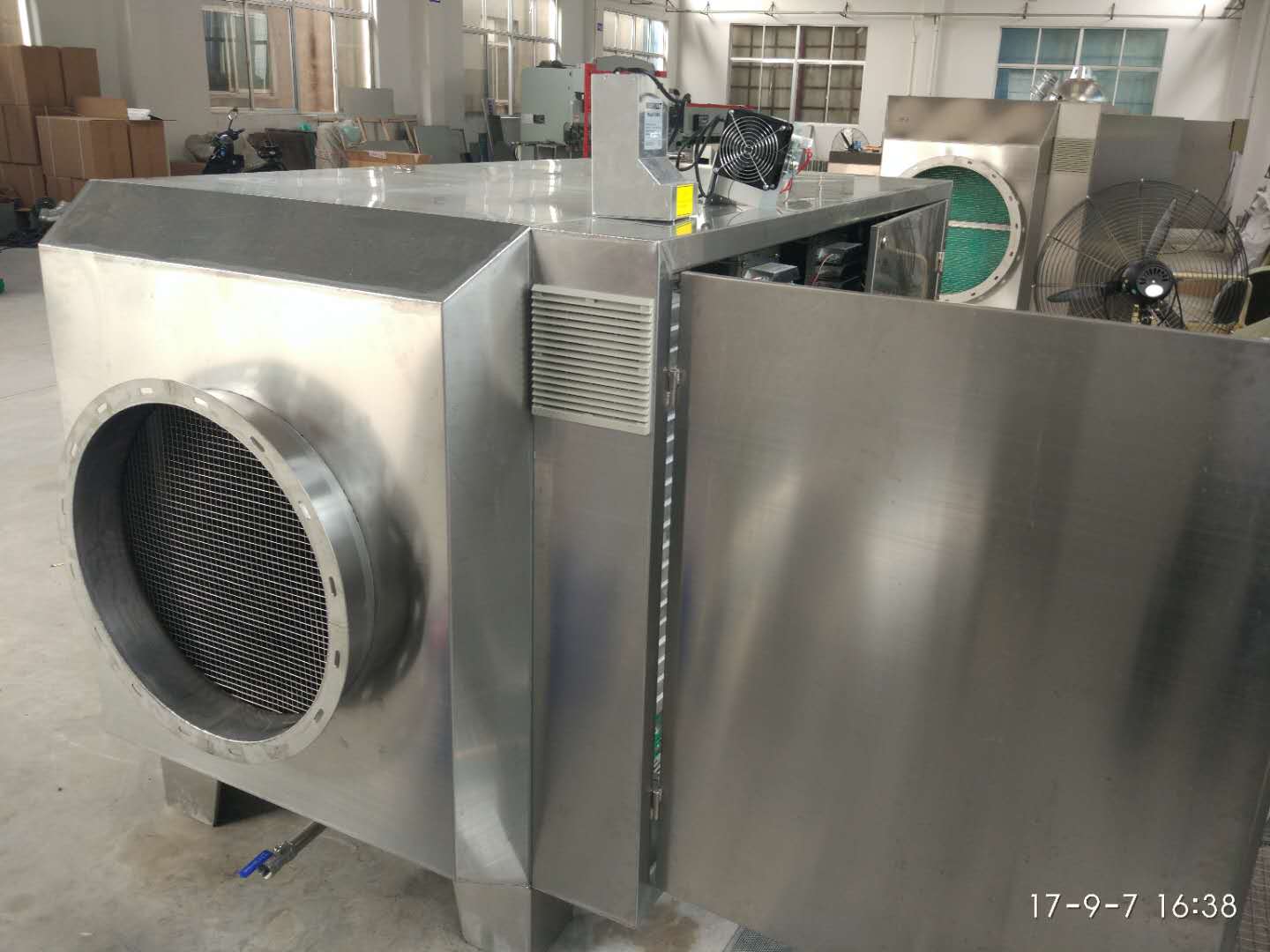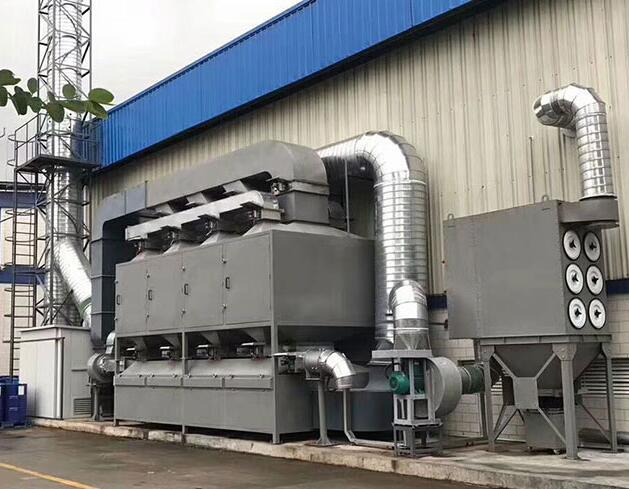Waste Gas Treatment in Pharmaceutical Industry
2. Pharmaceutical Exhaust Gas Composition: Different kinds of Exhaust Gas from Different Drugs
3. Waste gas treatment process in pharmaceutical industry:
1) Dry high-efficiency filtration + activated carbon adsorption concentration + catalytic combustion.
The process of "dry high efficiency filtration + activated carbon adsorption concentration + catalytic combustion" is suitable for organic waste gas (depending on the specific composition and concentration).
Process description:
The untreated waste gas contains a small amount of water mist and particulate matter. If it enters the activated carbon adsorption system directly, the gap of activated carbon will be blocked, resulting in the reduction of adsorption efficiency and even failure. At the same time, because of the long service life of activated carbon (in the case of analytical equipment), in order to ensure the adsorption effect of activated carbon, filters are usually used before the exhaust gas enters the activated carbon adsorption bed. To remove dust and viscous substances, the filter usually adopts two stages: the first stage: filtration accuracy G3, the second stage: filtration accuracy G4, to ensure that the exhaust gas entering activated carbon is relatively clean.
The filter is used to capture the dust in the exhaust gas. If the dust enters the concentrated adsorber directly, the capillary of the adsorbing material will be blocked and the adsorption performance will be reduced. The filter adopts the type of initial effect + bag type medium effect filtration, which will be maintained in the design for easy disassembly and installation. Pressure difference switch represents pressure loss in real time. According to the set pressure, alarm signal is sent to PLC when the pressure difference exceeds a certain value, so that the user can change the filter material in time.
After the adsorption of honeycomb activated carbon is saturated, the saturated activated carbon bed and the activated carbon bed to be used after desorption are switched alternately according to the automatic control program of PLC. The hot air is fed into the activated carbon bed by the air blower to make the carbon layer warm. The organic matter is desorbed from the activated carbon. The desorbed waste gas belongs to the organic waste gas with high concentration, low air volume and high temperature.
The organic waste gases with high concentration, low air volume and high temperature desorbed by activated carbon are filtered by fire-proof dust collector and then enter a special plate heat exchanger to exchange energy with the high temperature gases after catalytic reaction. At this time, the temperature of the exhaust gas source is raised for the first time, and the gases with certain temperature enter the preheater for the second time, and then enter the first stage of catalytic reaction. At this time, the organic exhaust gas is partially decomposed at low temperature and releases energy. The exhaust gas source is directly heated to raise the gas temperature to the optimum temperature of catalytic reaction. The temperature meets the temperature requirement of catalytic reaction and enters the catalytic combustion chamber. The organic gas is thoroughly decomposed and releases a lot of heat at the same time. The exchanger converts the heat energy to the cold air flow, and the air is exhausted by the induced draft fan after cooling.
This scheme is suitable for pharmaceutical factories which produce hydrogen sulfide waste gas, neutralize and absorb hydrogen sulfide gas in alkali scrubber, and then adsorb excess waste gas with activated carbon.
2) scrubber + photocatalytic equipment + fan
This scheme is suitable for most pharmaceutical factories, including hydrogen sulfide and various VOCs and other organic waste gases. It is the most widely used process scheme at present.
3) Washing Tower + Photoionization Composite Equipment + Fan
This scheme can deal with a wider range of waste gases, almost all types of waste gases can be treated.
 Huaxi EP
Huaxi EP









 Mobile access
Mobile access